Backup Using Windows File History
File History feature replaces Backup and Restore in previous versions of Windows and currently exists in Windows 8, 8.1, and 10. It is an application that continuously backs up the files in your Libraries, on your desktop, in your Favorites folders, and in your Contacts folders. It defaults to doing this on an hourly basis as long as the File History device, typically an external hard drive, is attached. It will not erase files and folders previously saved to the drive, as it stores everything in a top level folder named “FileHistory”.
1. Plug in your external hard drive.
2. In the Start menu or Windows search bar, type "File History" and select the "File History Settings" option.
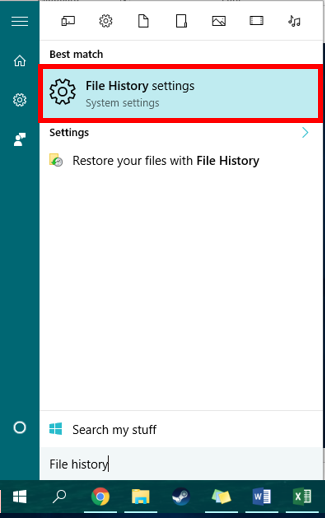
3. In the left pane, click "Select drive" to bring up available storage spaces.
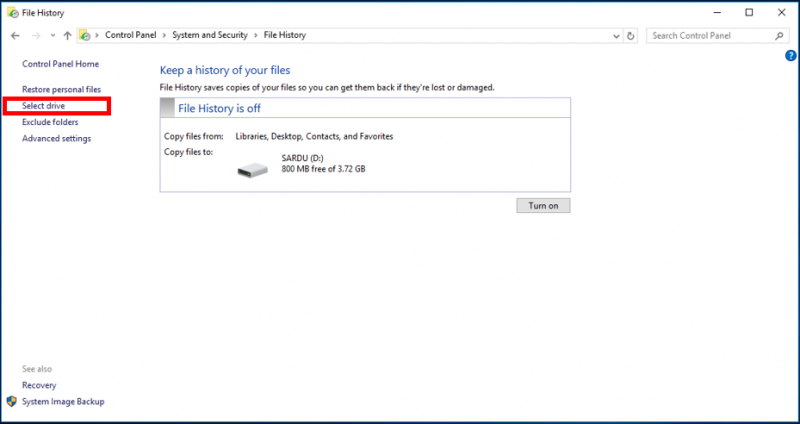
4. Select the external drive you connected in the first step and click "OK." If a dialog box pops up, select "No."
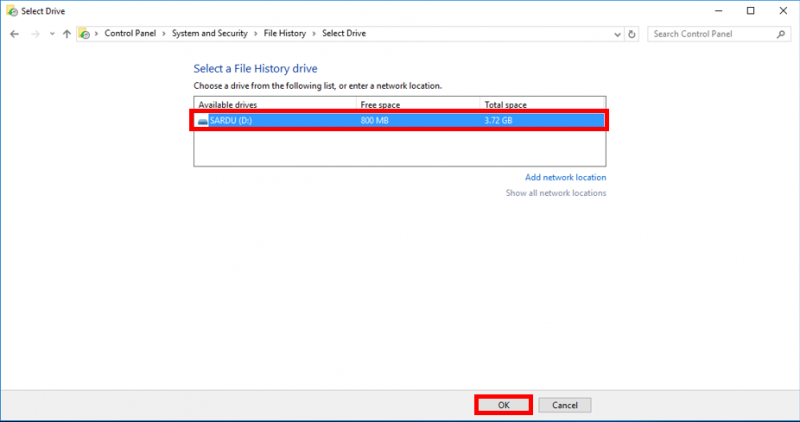
5. Click "Turn On." If File History is already on, skip this step.
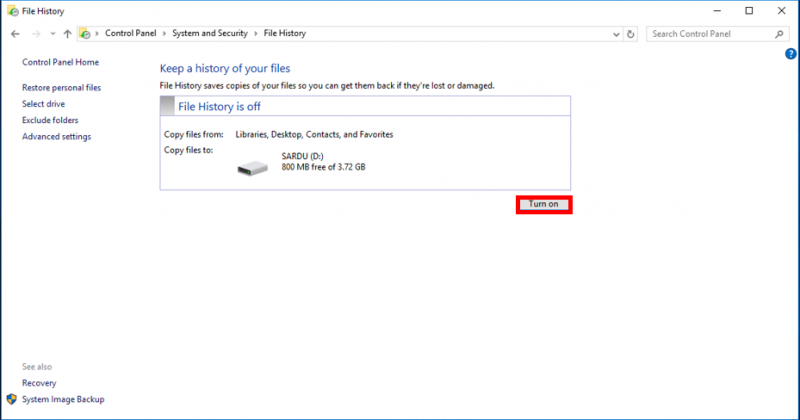
6. To back up files now, click "Run Now." This will do a backup now, regardless of the hourly schedule.
File History will NOT backup anything saved to your SkyDrive (OneDrive) storage, even if they are stored in the libraries File History backs up. You can back up additional files by adding them to the Documents library.
How to turn File History on
How to restore files
Restore Files on a new or reimaged machine
Extra Features
How to turn File History on
NOTE: File History ignores files that are in use when applications are open, such as Outlook .pst files if Outlook is open. To back up all files, shut down all programs, and use the “run now” option in File History to manually update the file history OR do a traditional drag-and-drop backup. We always recommended that you verify your backups.
1. Plug in your external hard drive.
2. In the Start menu or Windows search bar, type "File History" and select the "File History Settings" option.

3. In the left pane, click "Select drive" to bring up available storage spaces.

4. Select the external drive you connected in the first step and click "OK." If a dialog box pops up, select "No."

5. Click "Turn On." If File History is already on, skip this step.

6. To back up files now, click "Run Now." This will do a backup now, regardless of the hourly schedule.
- We reccomend that you use this feature when all other applications are closed so all files can be backed up, including Outlook.pst files.
How to restore files
1. Plug in your external hard drive.
2. In the Start menu or Windows search bar, type "File History" and select the "File History Settings" option.

3. In the left pane, click "Restore personal files."
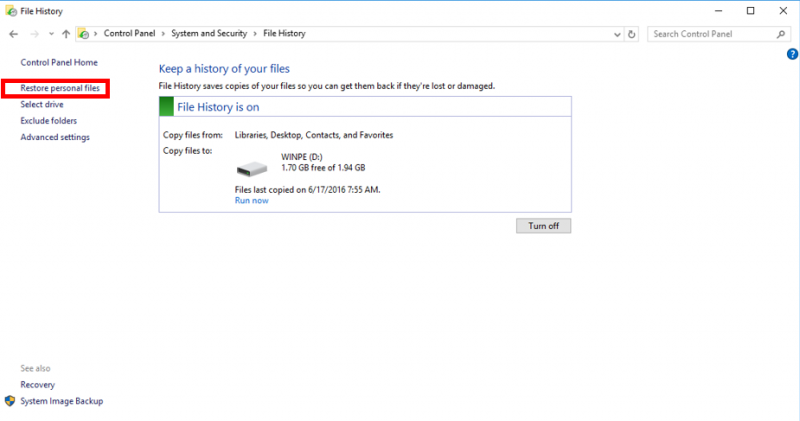
4. Click the left and right navigation buttons at the bottom of the window to select a backup to restore files from. You can see the time and date of the backup and look into the folders from here.
5. Click the green button at the bottom of the window to start the restoration process.
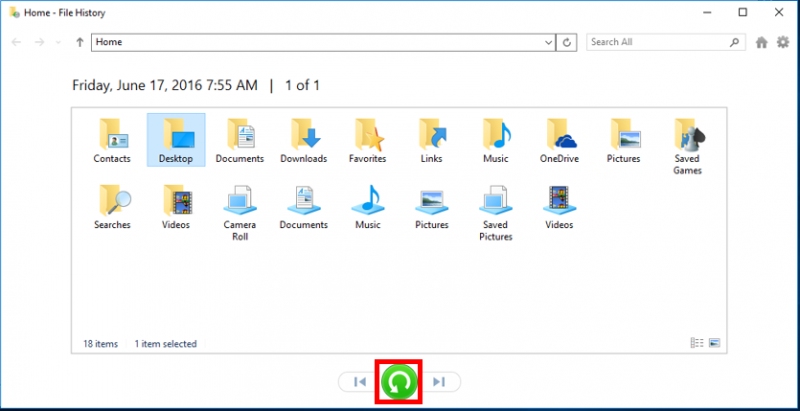
6. You may be prompted if you have copies of the backed up files aready on your computer. You'll have the option to overwrite the files on the hard drive, skip the files, or decide for each individual file.
2. In the Start menu or Windows search bar, type "File History" and select the "File History Settings" option.

3. In the left pane, click "Restore personal files."

4. Click the left and right navigation buttons at the bottom of the window to select a backup to restore files from. You can see the time and date of the backup and look into the folders from here.
5. Click the green button at the bottom of the window to start the restoration process.

6. You may be prompted if you have copies of the backed up files aready on your computer. You'll have the option to overwrite the files on the hard drive, skip the files, or decide for each individual file.
Restoring files onto a new computer or after your computer has been reimaged
1. Plug in your external hard drive.
2. In the Start menu or Windows search bar, type "File History" and select the "File History Settings" option.

3. In the left pane, click "Select drive" to bring up available storage spaces.

4. Select the external with your backups on it.
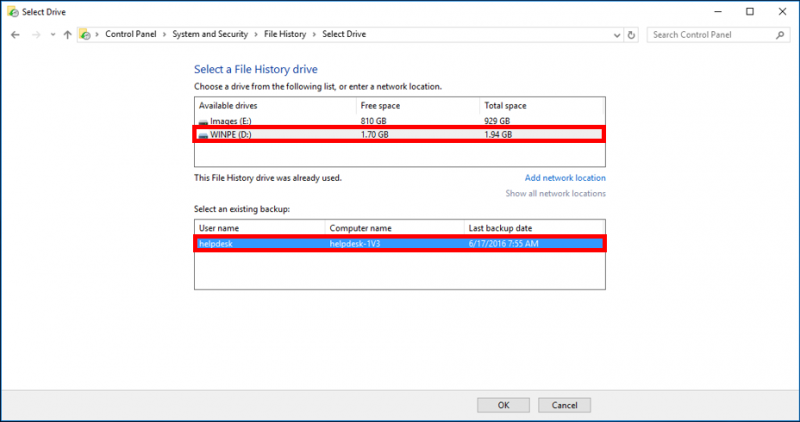
5. Check "I want to use a previous backup on this File History drive.
6. Select the appropriate backup.
7. Select "Yes" on the pop-up window.
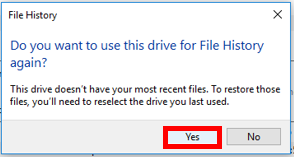
8. Follow the restore instructions above.
2. In the Start menu or Windows search bar, type "File History" and select the "File History Settings" option.

3. In the left pane, click "Select drive" to bring up available storage spaces.

4. Select the external with your backups on it.

5. Check "I want to use a previous backup on this File History drive.
6. Select the appropriate backup.
7. Select "Yes" on the pop-up window.

8. Follow the restore instructions above.
Extra Features
Excluding Folders from Backup
1. Plug in your external hard drive.
2. In the Start menu or Windows search bar, type "File History" and select the "File History Settings" option.

3. In the left pane, select "Exclude folders."
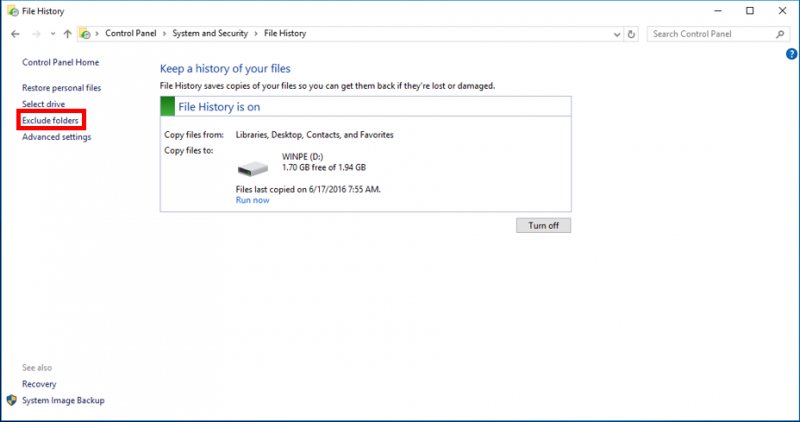
4. Click "Add" and browse to a folder to exclude.
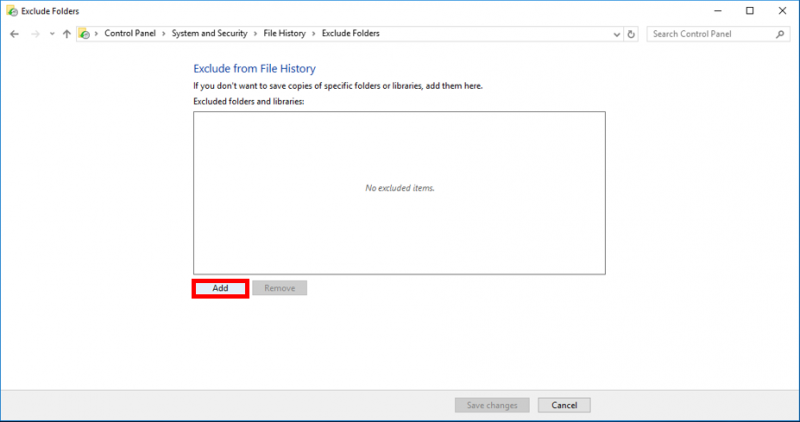
5. Click "Select Folder."
2. In the Start menu or Windows search bar, type "File History" and select the "File History Settings" option.

3. In the left pane, select "Exclude folders."

4. Click "Add" and browse to a folder to exclude.

5. Click "Select Folder."
Advanced Settings
In Advanced Settings you can change some settings such as the frequency of backups, size of offline storage and how long backups are kept.
1. Plug in your external hard drive.
2. In the Start menu or Windows search bar, type "File History" and select the "File History Settings" option.

3. In the left pane, select "Advances settings."
4. Use the drop-down menus to change defaults, clean up old backups, and change other options from here.
2. In the Start menu or Windows search bar, type "File History" and select the "File History Settings" option.

3. In the left pane, select "Advances settings."
4. Use the drop-down menus to change defaults, clean up old backups, and change other options from here.
Rate this Article:
Keywords:
